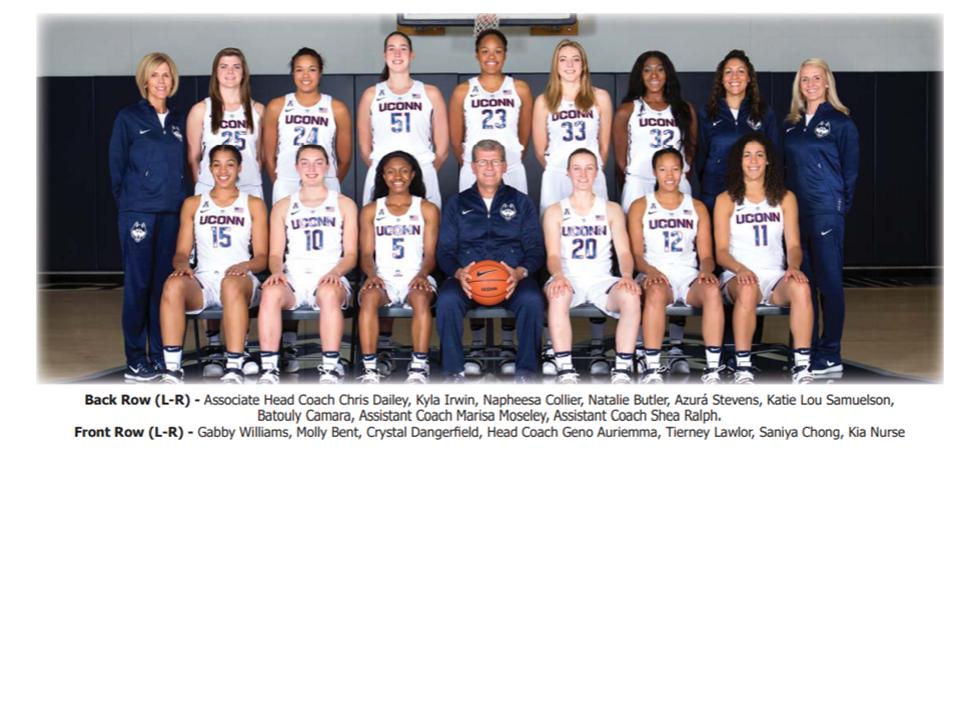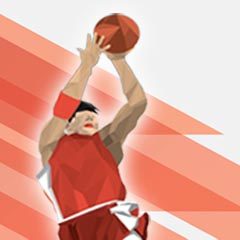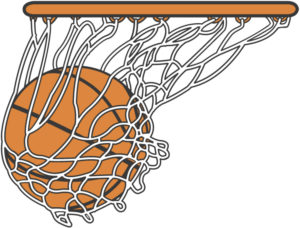This article is about the play that prevented UConn Women’s Basketball Team’s 111 game winning streak from going to 112… and a type of basketball defense (Ball-First M2M) that would have changed the outcome.
I teach “Ball-First Man-2-Man Trapping Defense” and the loss of the UConn Women’s 2017 Final Four game to Mississippi State provides an opportunity to take a look into some of the principles of BFM2M. Let’s start by checking out the video of the last play Mississippi State used to beat UConn in the 2017 Final Four…
The reason that Mississippi State’s Morgan William was able to get off her jumpshot was due to a mixup on the defensive coverage by UConn. Morgan William is probably the smallest player on the floor so if even one of the UConn players had been closer to her, the shot would certainly have been blocked or at least been a lower percentage. As you see in the video of the last play, there were a bunch of UConn players defending, swapping coverage as Mississippi State players moved around at the top of the key.
Here is where the breakdown occurred and where UConn lost… as Morgan Williams begins to drive, #11 Kia Nurse (who was covering another player too) jumps up to take Morgan. Morgan starts to drive and (this is where BALL FIRST M2M comes in) #12 Soniya Chong, who is now covering MS player #00, waves at the ball handler instead of coming over to trap and stop the drive. If you watch the play further, Kia Nurse backs away from Morgan William, probably under the assumption that #15 Gabby Williams would stop her.
Ordinarily that is a pretty good assumption since Gabby Williams is one of the most athletic players for UConn, but Morgan William has too much speed and momentum so Gabby is unable to get to her in time to stop the shot.
How would it change with Ball-First M2M defense?
Kia Nurse would have continued to aggressively defend the ball (Rule#1-The Ball is our first priority). By staying with the offensive player, Kia would have provided a “wall” of sorts so Morgan could not easily change direction.
Next, Soniya Chong would have jumped into the path of Morgan and placed her body so that she and Kia would create a trap. This is a difficult move if a player has never done it before because without a strong focus on a particular part of the play, it can go wrong quickly.
Players who use Ball-First M2M know that the key to this move is to keep your eyes on the ball. You know that the driver cannot change direction since that would bring them into your other defender and the ball would be open for a possible steal.
By focusing on the ball, you also are able to anticipate a pass to the player you are “leaving” (and intercept a pass if it is thrown). If the offense dribbles into the trap or tries to “plow through” the approaching defender (who is focusing on the basketball) needs to be ready to grab the ball (probably at waist or chest height) and rip it way from them. Other offensive players, usually the taller ones, may try to bring the ball over their head as they step through the trap… which is another reason all players need to keep an eye on the ball.
No one scores without the ball. Every time the ball leaves a player's hand there is an opportunity for a steal. - Coach Dave Wheeler
I know what I have described is a lot to expect from someone who has not used Ball-First M2M and hasn’t developed the skills of where to look (hint: Ball-First) and where they need to put their body to stop a driving offensive player. Ball-First M2M is not an overnight fix, especially since you need ALL the players on the defensive team to understand the approach so they can deal with 2nd and 3rd options. It can be, however, highly effective.
Bottom Line…
Even though I am a long-time fan of UConn WBB, I have to give credit to Mississippi State. They played a tough game. I also appreciate the effort put in by UConn.
It is unfair to focus on one play as the reason they lost since there were countless opportunities to get another basket earlier in the game. Every player and every coach knows that just one more made shot or an offensive rebound or a defensive stop and there would never have been an overtime period. I give credit to all the players, coaches and parents who helped both teams get to this game. Few people have even the smallest sliver of a glimpse into all the preparation and hard work that is put in at this level of basketball.
Having said that, the reason for this article is to show how Ball-First M2M defense can work at the highest levels. There is much more to Ball-First Man-to-Man defense that I have not mentioned in this article… most importantly, traps in other areas of the court. Those aspects will have to wait for another article. If you want to be sent a brief email when new articles are published for this blog, be sure to sign up for our email notification service. As always, your comments are encouraged and appreciated.


 What does it mean for a player to “take their game to the next level”? It sounds like a good thing but without understanding the meaning it is hard to get there, right?
What does it mean for a player to “take their game to the next level”? It sounds like a good thing but without understanding the meaning it is hard to get there, right? I coached this player as part of an AAU team when he was a freshman and he was a pretty good shooter. I won’t “name names” since I don’t want to embarrass him. Plus the advice could apply to a number of players.
I coached this player as part of an AAU team when he was a freshman and he was a pretty good shooter. I won’t “name names” since I don’t want to embarrass him. Plus the advice could apply to a number of players.
 Pattern Interrupts are a valuable tool that anyone can use to train your brain. We are all creatures of habit based on years of history. We have patterns that help us and others that don’t. You now have a tool to start changing those habits or patterns into something that better supports your goals.
Pattern Interrupts are a valuable tool that anyone can use to train your brain. We are all creatures of habit based on years of history. We have patterns that help us and others that don’t. You now have a tool to start changing those habits or patterns into something that better supports your goals. OODA stands for Observe / Orientate / Decision / Action and is a problem solving framework developed by a fighter pilot named
OODA stands for Observe / Orientate / Decision / Action and is a problem solving framework developed by a fighter pilot named 
 As I interviewed for various high school varsity coaching positions, I could see that some of the people on the selection committees seemed to be wondering “Why does he think he can take our school’s basketball program, which may have had only a handful of wins last season and establish a winning tradition?”
As I interviewed for various high school varsity coaching positions, I could see that some of the people on the selection committees seemed to be wondering “Why does he think he can take our school’s basketball program, which may have had only a handful of wins last season and establish a winning tradition?”